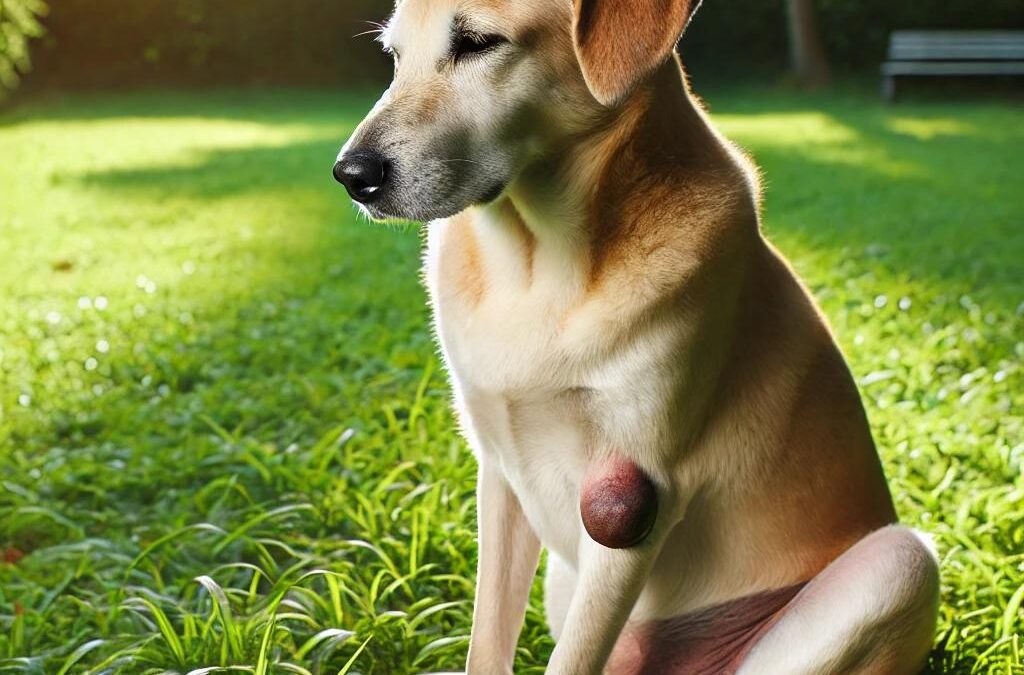基底細胞腫瘍は、犬に見られる最も一般的な良性皮膚腫瘍の 1 つです。この腫瘍は、通常、中年から高齢の犬に発生し、皮膚に硬いドーム型の塊として現れます。基底細胞腫瘍は一般的には非癌性ですが、その大きさと潰瘍化の可能性により、不快感を引き起こすことがあります。この記事では、犬の基底細胞腫瘍の症状、原因、および治療オプションについて説明します。
基底細胞腫瘍とは何ですか?
基底細胞腫瘍は、犬の皮膚にある基底細胞から発生する皮膚腫瘍です。これらの腫瘍は通常良性で、癌ではありませんが、大きくなって不快感を引き起こすことがあります。最もよく見られるのは、犬の頭部(特に耳)、首、前肢です。良性ですが、特に腫瘍が大きくなった場合は、潰瘍、炎症、不快感などの問題を引き起こすことがあります。
犬の基底細胞腫瘍の症状
基底細胞腫瘍は、一般的に皮膚上に硬く隆起した塊として現れます。これらの腫瘍の大きさは、0.4 インチ (1 センチメートル) 未満の小さな隆起から、直径 4 インチ (10 センチメートル) を超える大きな塊までさまざまです。その他の特徴としては、次のものがあります。
- 孤立性腫瘤腫瘍は、複数の成長ではなく、単一の塊として現れることが多いです。
- 毛のないまたは潰瘍のある表面これらのしこりは毛がないことが多く、場合によっては破れて潰瘍になることもあります。
- ドーム状の腫瘍腫瘤はドーム状の形状をしており、茎のような突起で皮膚から突き出ていることが多いです。
- 暗い色合い場合によっては、腫瘍の色が暗くなることがあります。
- 二次性嚢胞: 腫瘍の内部または周囲に嚢胞が形成されることがあります。
基底細胞腫瘍は良性であるにもかかわらず、潰瘍を形成して二次的な炎症を引き起こすと問題になることがあります。これらの腫瘍を持つ犬は、特に腫瘍が感染したり周囲の皮膚組織が壊死したりすると、不快感を感じることがあります。
犬の基底細胞腫瘍の原因
犬の基底細胞腫瘍の発生にはいくつかの要因が関与している可能性があります。
- 年齢これらの腫瘍は中年から高齢の犬によく見られます。
- 品種の素因ワイアーヘアード・ポインティング・グリフォン、ケリー・ブルー・テリア、ウィートン・テリアなどの特定の犬種は、基底細胞腫瘍を発症する可能性が高くなります。
- 太陽に当たる: 紫外線に長時間さらされると、犬の皮膚腫瘍のリスクが高まる可能性があります。
犬の基底細胞腫瘍の治療法
基底細胞腫瘍に対する最も効果的な治療法は 外科的切除これらの腫瘍は大きくなり、潰瘍や炎症により不快感を引き起こす可能性があるため、腫瘍を切除することで刺激の原因を排除できます。手術は通常は簡単で、特に腫瘍が大きくなりすぎる前に早期に発見された場合は簡単です。
場合によっては、腫瘍によって引き起こされる二次感染や炎症を管理するために、抗生物質や抗炎症薬などの追加治療が処方されることがあります。腫瘍が除去されると、再発の可能性は一般的に低く、犬の生活の質が大幅に向上します。
犬の基底細胞腫瘍は良性ですが、その大きさと潰瘍化の可能性により、かなりの不快感を引き起こす可能性があります。特にこれらの腫瘍が発生しやすい犬種の場合は、犬の皮膚を定期的に監視することで、腫瘍の早期発見に役立ちます。外科的切除は効果的な治療法であり、感染症や炎症などのさらなる合併症を防ぐことができます。犬の皮膚に異常なしこりや塊が見られた場合は、獣医師に相談して最善の処置方法を判断してください。















